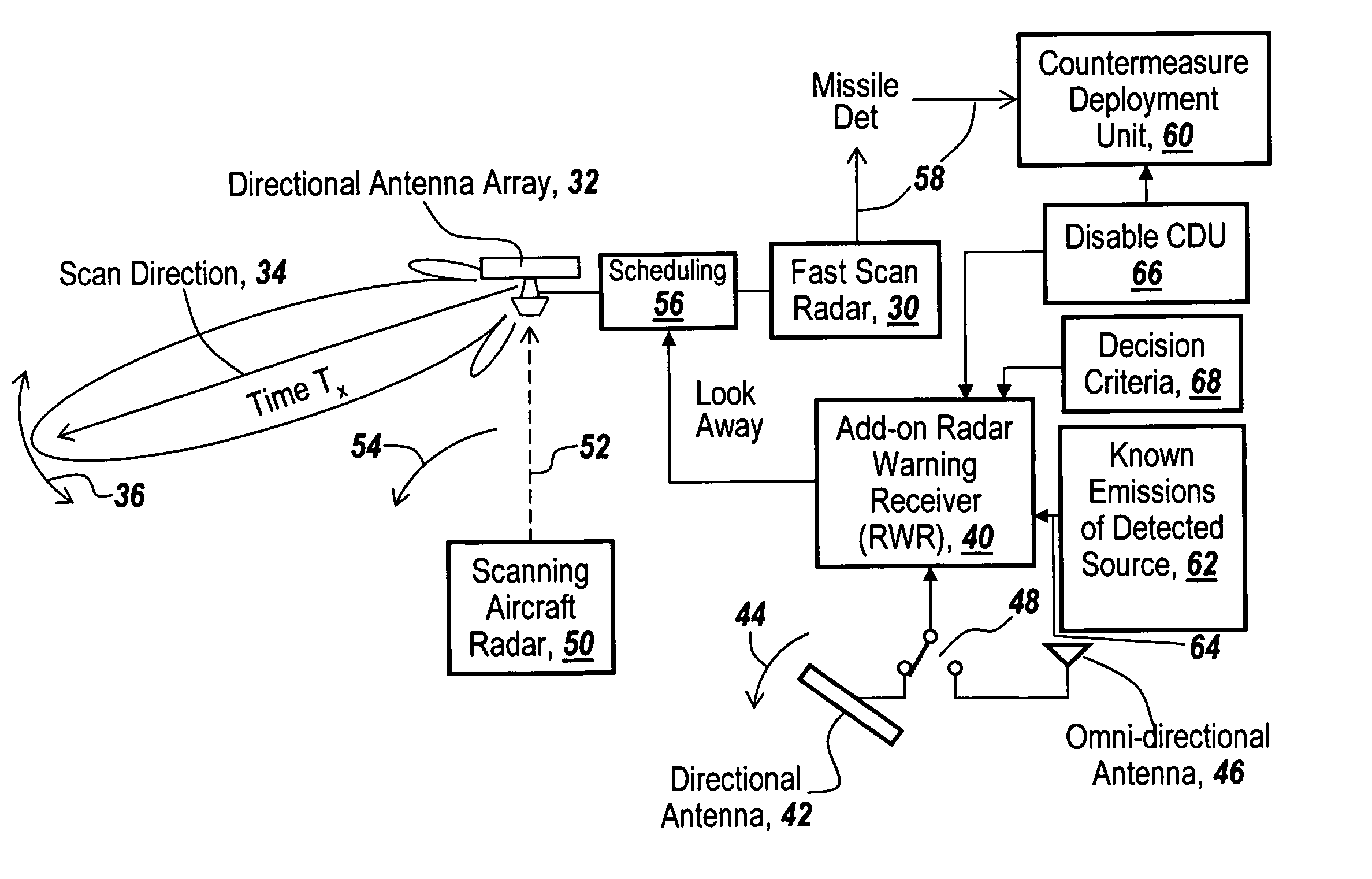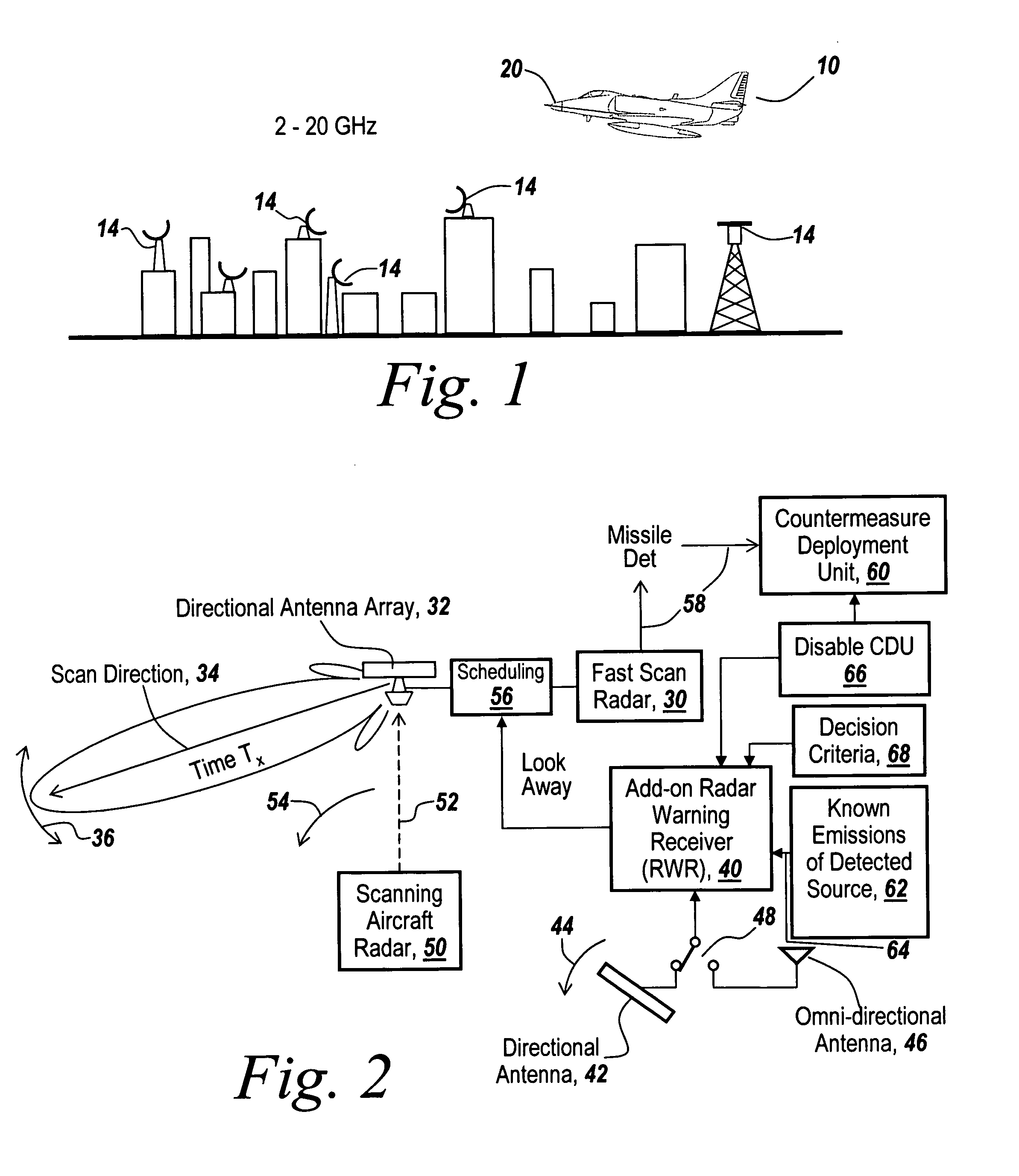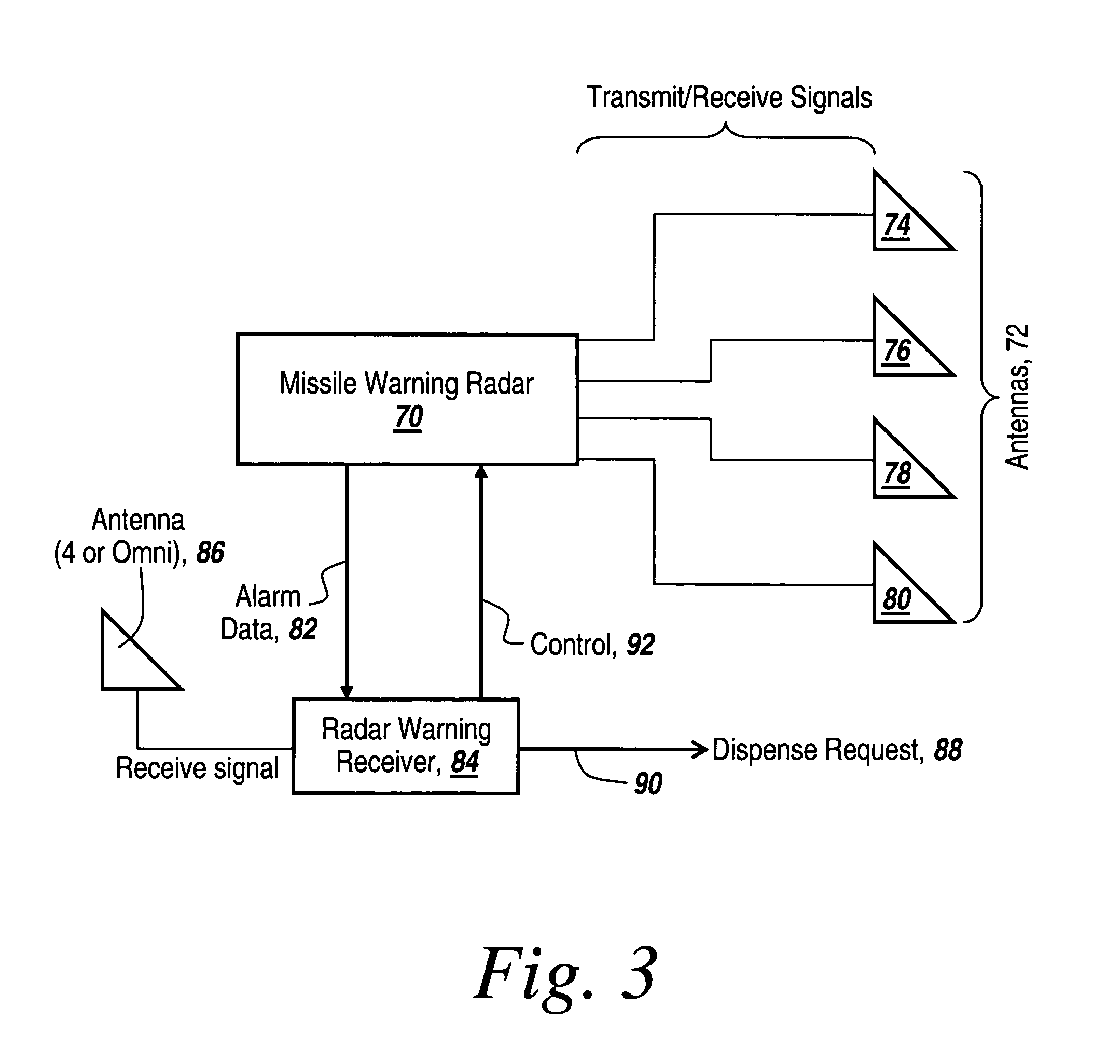Method and apparatus for monitoring the RF environment to prevent airborne radar false alarms that initiate evasive maneuvers, reactionary displays or actions
a technology of airborne radar and environment monitoring, which is applied in the field of addon radar warning receivers, can solve the problems of increasing the density of airborne radars, the inability of airborne radars to provide a monitoring mechanism for the environment monitoring of the rf environment to prevent such false alarms, and the cost of reacting to false alarms becoming problematic, so as to prevent false alarms and accurately predict the cost and consequences of reacting.
- Summary
- Abstract
- Description
- Claims
- Application Information
AI Technical Summary
Benefits of technology
Problems solved by technology
Method used
Image
Examples
Embodiment Construction
[0026]Referring now to FIG. 1, an aircraft 10 is used to overfly an urban environment. which includes multiple emitters 14 that are positioned about the urban environment that can provide either in-band or out-of-band RF emissions that cause the primary radar 20 carried in aircraft 10 to initiate false radar warnings.
[0027]It will be appreciated that whether or not aircraft 10 is a manned aircraft or is an unmanned aerial vehicle with severely limited stores or maneuverability, it is unacceptable to react to false alarms based on interference.
[0028]In an urban environment and indeed throughout the countryside, the presence of, location of and emission characteristics of most emitters are well known in advance. In point of fact, many of these emitters are licensed by local authorities and usually involve microwave links, broadcast emitters and more problematic very high powered aircraft surveillance and tracking radars.
[0029]While there are many emitters that provide both in-band and...
PUM
 Login to View More
Login to View More Abstract
Description
Claims
Application Information
 Login to View More
Login to View More - R&D
- Intellectual Property
- Life Sciences
- Materials
- Tech Scout
- Unparalleled Data Quality
- Higher Quality Content
- 60% Fewer Hallucinations
Browse by: Latest US Patents, China's latest patents, Technical Efficacy Thesaurus, Application Domain, Technology Topic, Popular Technical Reports.
© 2025 PatSnap. All rights reserved.Legal|Privacy policy|Modern Slavery Act Transparency Statement|Sitemap|About US| Contact US: help@patsnap.com



